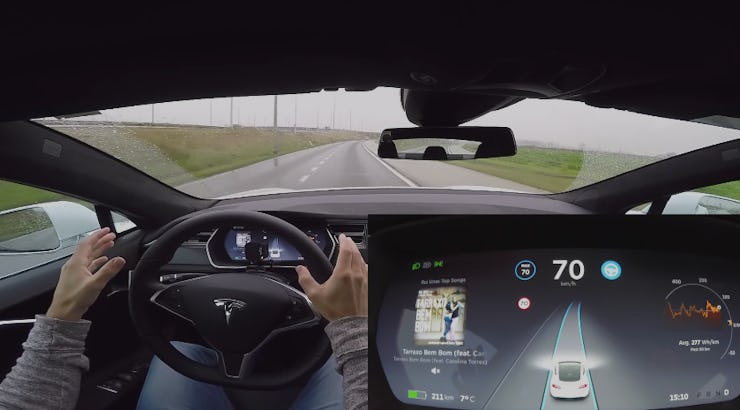A major new Tesla Autopilot update is almost here. Version nine of the electric car firm’s semi-autonomous driving system will be the first to start enabling full autonomy features, with eventual point-to-point full driving a long-term goal for CEO Elon Musk. The new Autopilot, set to roll out as an over-the-air update, is a big step in this goal.
Musk announced in October 2016 that all new vehicles would ship with the necessary cameras and sensors to enable full self-driving at a later date, as part of a shift from Mobileye’s older Autopilot system to one powered by Tesla’s in-house software. The system is available as a $5,000 add-on at the time of the car’s purchase or $6,000 thereafter, while users that opt for Autopilot can spend $3,000 extra to pre-order full autonomy or wait and spend $5,000 extra after launch. The current system, powered by the Nvidia Drive PX 2, enables a number of limited driving options like staying in lanes on a highway and summoning out from a garage.
The existing version of Autopilot has already wowed consumers with its vast improvements over recent months. YouTube user “i1Tesla” shared a video of a drive in a Model 3 showing the system’s latest skills:
Autopilot has racked up over 1.2 billion autonomous driving miles. Here’s how Tesla plans to improve:
Tesla Autopilot 9: What to Expect
The update is the first new major version number in two years. The update will make a number of changes, including the addition of a new user interface and the long-awaited “on ramp to off ramp” feature.
Tesla first promised the feature back in 2017 with the following description as recorded by Electrek:
Once on the freeway, your Tesla will determine which lane you need to be in and when. In addition to ensuring you reach your intended exit, Autopilot will watch for opportunities to move to a faster lane when you’re caught behind slower traffic. When you reach your exit, your Tesla will depart the freeway, slow down and transition control back to you.
Stuart Bowers, vice president of engineering, explained in the investor earnings conference call this month that the team is focused on delivering a feature that will “automatically attempt to change lanes, understand what lane the car is in, understand the route the user wants to travel and take that route for the user and ultimately hand back control to that user which is kind of safe and controlled.”
Musk also suggested in the same call that new versions of Autopilot will focus on safety first and foremost, stating that the team’s priority is to be “focused on fundamental safety of the existing features.”
The update is also expected to include a dashcam feature, utilizing the eight cameras in newer vehicles to record crash footage:
The user interface is also expected to get an update:
Musk announced on June 10 that the update will launch as soon as August:
He reiterated this release date at the start of August, while promising a series of fun games developed by Atari.
The games may also utilize the car steering wheel for control:
Musk stated in May that these games would be included as a fun easter egg.
The update is set to include the first full self-driving features. The announcement comes alongside Musk’s reveal in the August conference call that the company has developed an in-house artificial intelligence chip, replacing the Drive PX 2, that can process 2,000 frames with full redundancy and fail-over, 100 times more than the PX 2. The new chip is set to start shipping within the next four to six months. However, Nvidia confirmed to Inverse last week that it’s still working with Tesla.
Tesla is about to take a step to Musk’s full autonomous driving goal.
